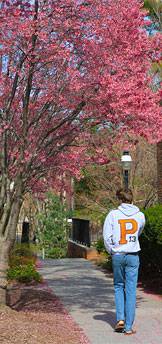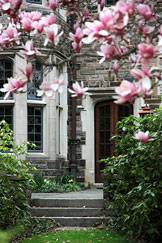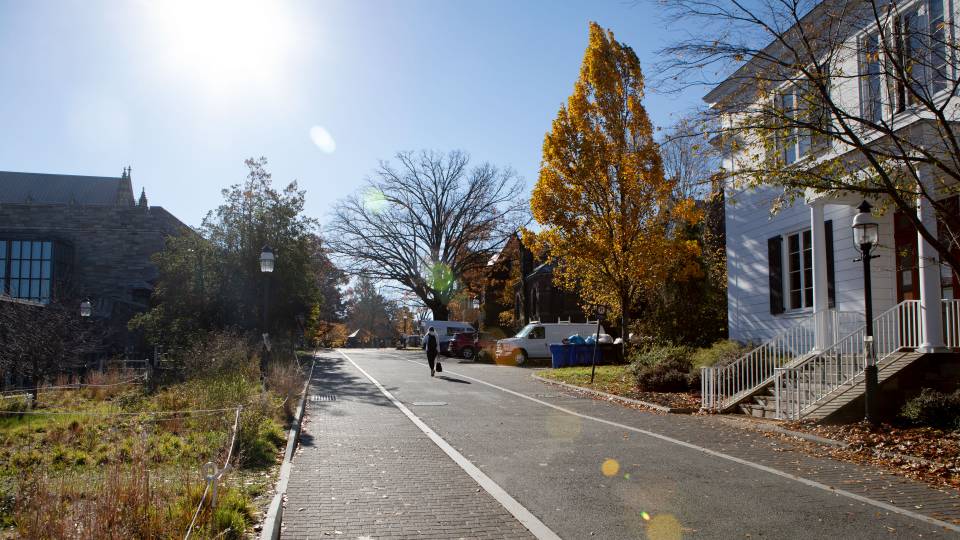The landscape of Princeton's campus always has been a defining element of its identity and experience. Beginning with the enclosure of the "front campus" between Nassau Hall and Nassau Street in 1756, the relationship between the architecture and the landscape has created a feeling of an intimate academy unique to this setting, with myriad pathways and courtyards. There are places to congregate, to meditate and to appreciate nature; there are places where one can simply escape from the noise of daily life.
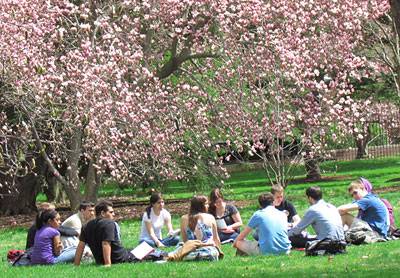
At Princeton, a sure sign that warmer temperatures have arrived is classes meeting outside, such as this one on the front lawn of Prospect House, under a flowering Saucer Magnolia (Magnolia soulangiana). (Photo by Mahlon Lovett)
Many elements of Princeton's present beauty are the work of Beatrix Farrand. Commissioned in 1912 to work with architect Ralph Adams Cram at the new Graduate College, Farrand was appointed University consulting landscape architect in 1915. Her work at the Graduate College was an auspicious beginning of a 30-year association with the University. Farrand’s work -- and that of her head gardener James Clark, who served from 1928 to 1962 -- survives today almost in its entirety at the Graduate College and in remnants throughout the main campus.

Daffodils (Narcissus spp) fill the lawn next to Proctor Hall, at the Graduate College. (Photo by Mahlon Lovett)
Today, as the University's campus evolves, with growing arts, humanities and science areas, the planning challenge is to accommodate growth while preserving the campus characteristics -- and abundant natural beauty -- treasured by generations of students, faculty, staff and visitors.

Princeton Preview, sponsored by the Admission Office, brings families of prospective undergraduates to campus to sample classes, meet professors, visit the University Art Museum and take a tour of the campus -- which includes, here, a stop in the formal garden of Prospect House. (Photo by Mahlon Lovett)
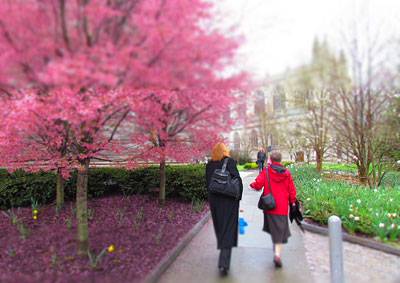
An early blooming Okame cherry (Prunus 'Okame') greets visitors to Firestone Library as they walk past Scheide Caldwell House from Nassau Street; across Firestone Plaza stands the University Chapel. (Photo by Mahlon Lovett)
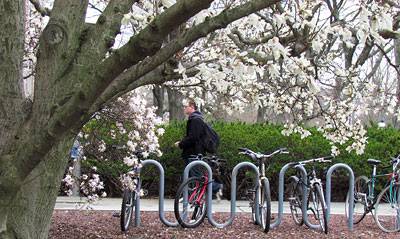
Shapiro Walk, which in early spring is enlivened by Saucer Magnolia (Magnolia soulangiana), offers one avenue of access to the Engineering Quadrangle across from the Computer Science Building and Mudd Manuscript Library. (Photo by Mahlon Lovett)

Among the campus plants first to bloom in spring, these daffodils (Narcissus spp) fill a bed between Wright and Walker halls; at the top of the steps, students walk through an arch leading to Cuyler Hall. (Photo by Mahlon Lovett)

A Saucer Magnolia (Magnolia soulangiana) dapples the entrance to Corwin Hall on Scudder Plaza -- a popular spot to study, read, visit with friends and enjoy the sun while the 'Fountain of Freedom' sprays a cooling mist. (Photo by Denise Applewhite)
